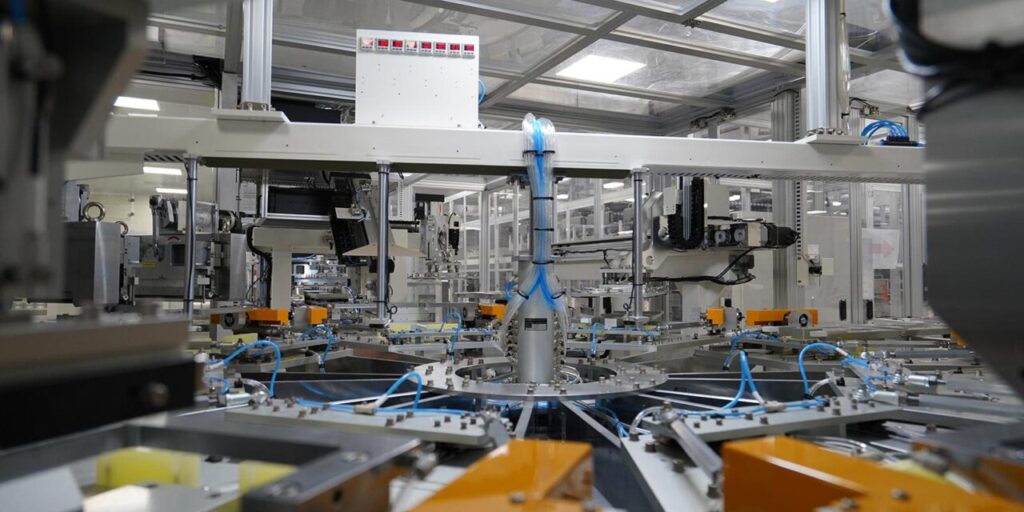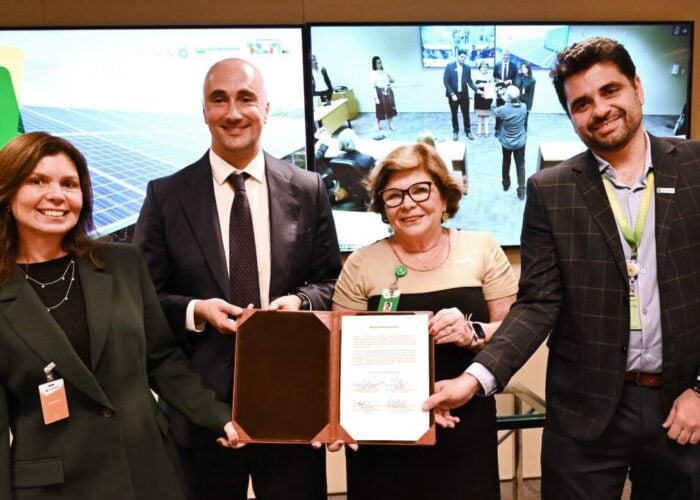
Israel-headquartered inverter manufacturer SolarEdge sold close to 1.5GW of inverters in the third quarter of the year, driving revenue of US$340.2 million.
The latest figures come from the company’s third quarter results, published yesterday, and both figures are improvements over the metrics reported in the previous quarter, where the company sold 1.19GW of inverters and posted revenue of US$289.4 million.
Try Premium for just $1
- Full premium access for the first month at only $1
- Converts to an annual rate after 30 days unless cancelled
- Cancel anytime during the trial period
Premium Benefits
- Expert industry analysis and interviews
- Digital access to PV Tech Power journal
- Exclusive event discounts
Or get the full Premium subscription right away
Or continue reading this article for free
SolarEdge’s revenue has increased consistently this year, from US$219.5 million reported in the first quarter of 2025, and revenue of US$849.1 million in the first nine months of the year is higher than the US$704.2 million reported in the first nine months of 2024.
The company’s sales of battery energy storage systems (BESS), meanwhile, grew by a smaller degree, from 247MWh of sales in the second quarter to 269MWh in the third quarter.
SolarEdge’s non-GAAP operating expenses have also remained consistent from one quarter to another, increasing marginally from US$85.2 million in the second quarter fo US$87.7 million.
Also yesterday, SolarEdge announced a collaboration with German semiconductor manufacturer Infineon to build solid-state transformers (SST) for use in data centres. Growing electricity demand from data centres has been a key topic of conversation in the energy sector this year, but SolarEdge CEO Shuki Nir said on a conference call to discuss the results that SolarEdge is looking at the collaboration “as something that is not going to be a major investment from our side”.
Responding to the US policy environment
Nir also fielded several questions on the topic of US policy, particularly on the topic of tariffs imposed on goods imported from overseas, and the tightening of foreign entity of concern (FEOC) legislation that will likely disrupt international trade further. The company’s financial results suggested that tariffs had a negative impact of 2% on gross margin, and Kir said that he expects the impact on margin in the fourth quarter to be similar.
“We are extremely focused on diversifying and optimising our supply chain to address this dynamic tariff environment,” said Nir. “At the same time, the quality of the availability of our products is very important to us. The impact also may be mitigated by some pricing actions that we may take.”
While SolarEdge has not historically hosted significant manufacturing capacity in the US—entering the space for the first time in July 2024—Nir expressed optimism that projects in the US using SolarEdge products will still be able to benefit from investment tax credit (ITC) support, despite the government’s tightening of eligibility criteria for such tax credits.
“Certain partners have safe harboured with us through the 5% method,” said Nir, referring to the fact that energy projects with less than 1.5MW of capacity can secure ITC support by spending 5% of a project’s total costs within a certain timeframe. “We designed and executed customised safe harbouring strategies [and] such transactions have several benefits. For customers, it lets them [have] quality projects over multiple years for lower capital outlay.”
For larger projects that are ineligible for this 5% spend threshold, they must pass a “physical work test” to demonstrate that “physical work of a significant nature” has started at the project. While this is a more subjective assessment, Nir said that SolarEdge has worked closely with its partners at larger projects to ensure that construction work will be completed quickly, and to a standard that will pass this assessment.
“By helping our customers safe harbour through the physical work of significant nature method, we are able to manufacture and deliver the full product closer to the time the customer needs it,” explained Nir. “Therefore, we can manage the manufacturing over time and there is no fall forward of revenue typically associated with a 5% safe harbour transaction.”
Commercial-scale inverters and storage to drive future growth
Nir also said that the company’s strengths are “even more pronounced” in the commercial and industrial (C&I) space in the US, and that SolarEdge is “the only scale player capable of delivering a non-FEOC and domestic content-compliant C&I solution.”
While the company has not published inverter sales per market segment since the first quarter of 2025, commercial inverters has historically been a significant part of SolarEdge’s sales output, as shown in the graph below.
Nir added that he expects the company to sell well in the European C&I space too, particularly for C&I BESS systems, due to the fact that the company’s distribution partners have “normalised levels of inventory” so are receptive to receiving and selling on new products.
“Due to the fact that [products] are going to be manufactured in the US and exported to Europe, this allows us to be more competitive in the marketplace without sacrificing margin necessarily and all of these reasons are giving us optimism [as] there is definitely room to grow,” added Nir.
Looking ahead, the company expects its fourth quarter results to be broadly in line with its third quarter results, with revenue in the range of US$310-340 million and operating expenses in the range of US$85-90 million.






